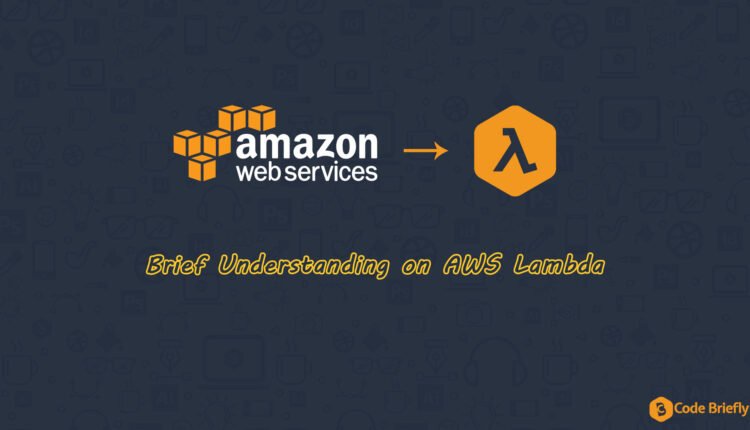Basic Understanding on AWS Lambda
In this article, we will discuss “Brief Understanding on AWS Lambda”. As we know, Amazon Web Services (AWS) offers more than 200 services. Today, I’ll try to explain to you AWS Lambda in simple terms. You get a brief exposure to what exactly the AWS Lambda is, how it works, its limitations, benefits, costing, and more.
Table of Contents
What is AWS Lambda?
Lambda is a serverless, event-driven compute service. Here, we run our code without provisioning and managing any server. AWS Lambda functions are scaled automatically, from a few requests to thousand requests per day or second. You can pay only for the compute time, it will not change us when our function is not running.
We can invoke a Lambda function using the Lambda API, AWS CLI or Lambda can run our function to handle the response of other AWS services. Some of the common examples are given below:
- Process streaming data stored in Amazon Kinesis.
- Handle user response in Amazon Connect in between the calls.
- Process two-way communication of Amazon Pinpoint using Amazon SNS.
Lambda Streaming Process
We can use AWS Lambda and Amazon Kinesis to process real-time streaming data for application activity tracking, transaction order processing, clickstream analysis, data cleansing, log filtering, indexing, social media analysis, IoT device data telemetry, and metering.
I will explain more about the AWS Lambda and Amazon Kinesis for delivery reports of Pinpoint messages and AWS Connect (Contact Center) in our coming articles.

AWS Lambda Feature
Some are the AWS Lambda Feature mentioned below.
- No new language knowledge, tool, or framework is required for AWS Lambda. AWS Lambda natively supports Java, Python, C#, Node Js, Go, PowerShell, and Ruby.
- AWS Lambda manages all the infrastructure and scales those automatically. So we can focus on the required development.
- Lambda offers built-in logging and monitoring through Amazon CloudWatch.
- It offers multiple options like AWS S3 Bucket, CloudWatch, DynamoDB, Amazon Kinesis Stream, and many more to trigger an event.
- We can use AWS Lambda to create new backend application services triggered on-demand using the Lambda application programming interface (API) or custom API endpoints built using Amazon API Gateway.
- We pay only for the request served and compute the time required to run the code.
- AWS Lambda is secure and used AWS IAM role and policies. Each service required the related policies and role otherwise created Lambda function will not work.
AWS Lambda Pricing
AWS Lambda pricing is calculated on memory and duration used by our function. We can assign up to 10GB of memory to a Lambda function, by default it’s set to 128MB. AWS Lambda also provides a free tier which includes one million free requests and 400,000 GB-seconds of computing time per month. You can get full details for AWS Lambda Pricing here or you can use the AWS pricing calculator.
Limitation of AWS Lambda
Some of the Cons/disadvantages of AWS Lambda are given below:
- Lambda is not suitable for small projects.
- By default, memory is used to
Create AWS Lambda Function
Please check out our previous post “How to Send SMS with AWS SNS using Lambda & Python“. In this, you got the complete exposure of creating Lambda function and also about the AWS SNS (Simple Notification Services).
Conclusion
In this article, we are discussing “Basic Understanding on AWS Lambda”. Hope you like this article, We will discuss more on Lambda in our future articles. Such as Lambda Versioning, Lambda Alias, and many more. Please feel free to add your comments if any queries or send your feedback.
Keep learning & stay healthy 🙂
You may like:
How to Setup AWS Pinpoint (Part 1)
How to Upload File to AWS S3 Bucket Laravel
How to Create AWS IAM User with Programmatic Access
How to Upload File to AWS S3 Bucket Laravel
If you like our content, please consider buying us a coffee.
Thank you for your support!
Buy Me a Coffee

